Seeing our pets in pain is something that every animal owner dreads. We take so many steps to ensure that our dogs and cats are fed the right food, provided with ample exercise and live the best quality of life they can. But sometimes accidents happen. Of all the injuries and ailments to affect our pets, broken teeth is one of the more serious ones. Humans have the luxury of opposable thumbs for holding, moving and interacting with objects while dogs and cats have their mouths. A broken dog tooth or broken cat tooth is like the equivalent of a broken hand in humans and must be met with the utmost seriousness when discovered. But it can be difficult to detect. In this article, we will explore the 2 main fractures and breaks in dog and cat teeth, how to identify them and treat them. As always, if you notice any issue in your pet’s health, you should always make scheduling a vet visit your first priority.
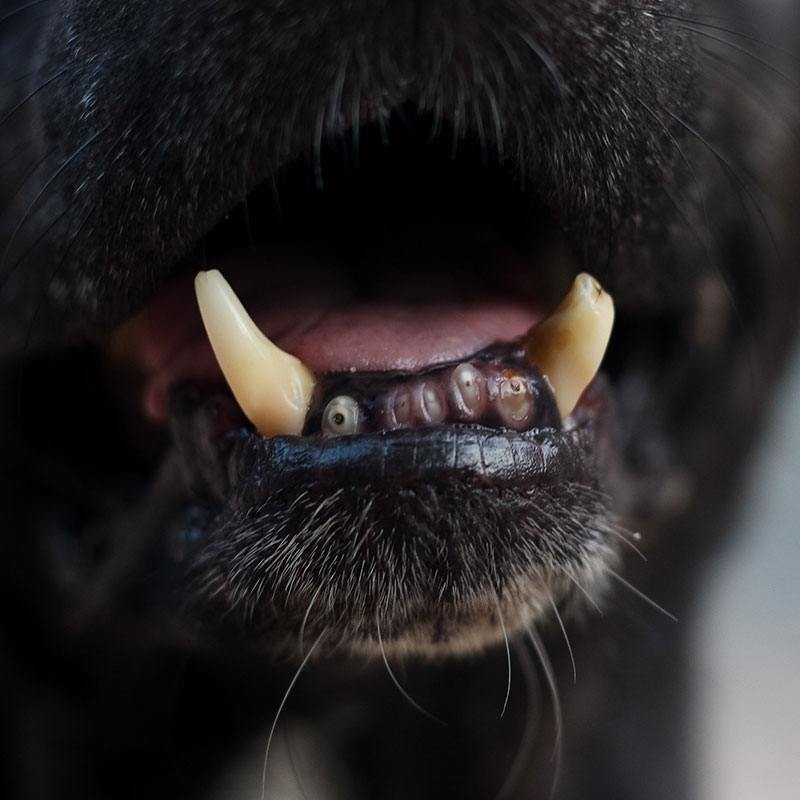
Causes of Broken or Fractured Teeth In Cats and Dogs
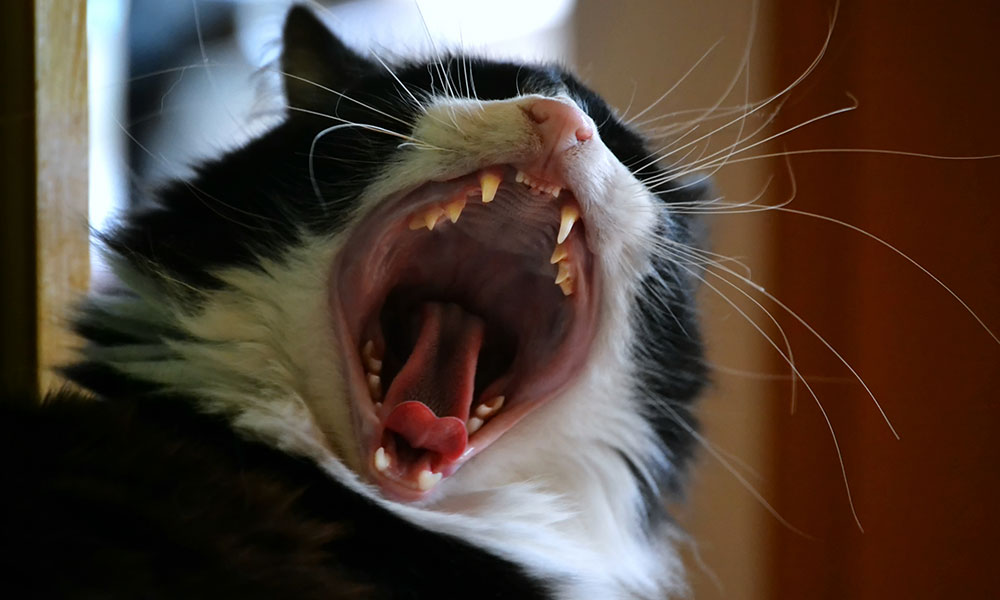
We may talk to our dogs and cats like they are people and can understand what we’re saying, but at the end of the day they are still animals. They are going to explore areas we would prefer they don’t and interact with objects we wish they wouldn’t. One of the most common reasons that your cat or dog may have a fractured or broken tooth is because they were gnawing on the wrong toy or item. For dogs, they often fracture their teeth on bones, antlers, sticks or toys that are too hard to chew. The average bite strength of a dog is roughly 269 pounds of pressure. Enough to shatter a human jaw. If a dog is over excited and playful, it’s common for them to injure themselves on an object. Biting isn’t the only cause of broken, cracked or fractured teeth in dogs either. Often dogs will suffer a fracture from blunt force trauma due to an accident with a vehicle or an altercation with another dog.
Cats suffer the same injuries as dogs when it comes to their teeth. Although they may be a little better at hiding it. While the odds of an indoor cat having an incident with a vehicle are lower than dogs, cats can still break, crack or lose a tooth by chewing foreign objects or toys as well. Cases have been reported of broken teeth happening due to a fight with another cat, but they are low. Similar to dogs, cats are a curious and playful creature. They also do not check to make sure something is safe before they do it. If you’ve ever been woken up at 3am to the sounds of your cat “going crazy”, you know exactly what we mean. Cats can break, chip or lose a tooth playing or jumping off of a surface that was just too high for them.
Signs Your Dog or Cat Has a Broken Tooth
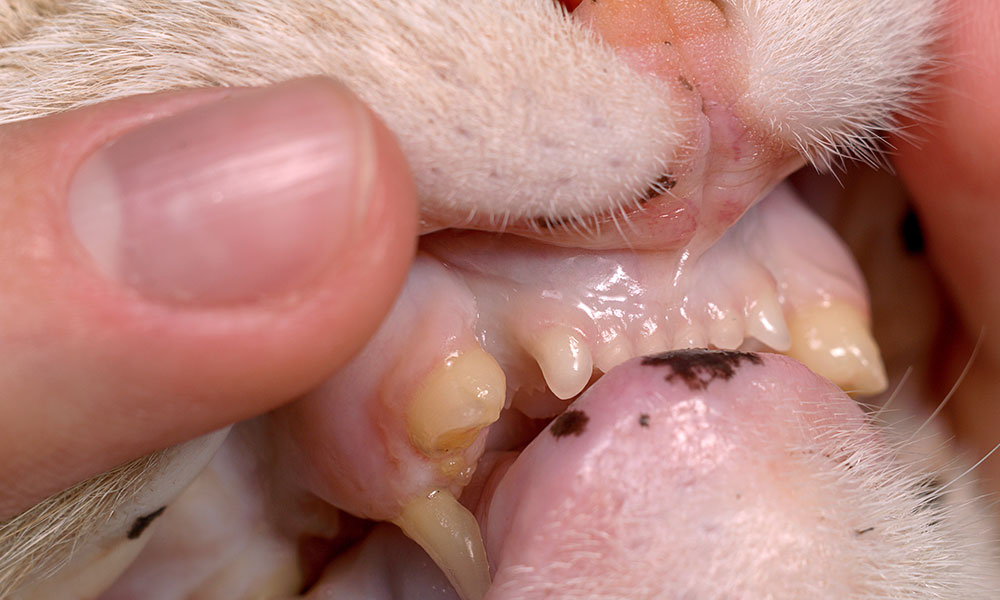
While it may not be an obvious injury, it’s important to be educated on some simple signs that may indicate your pet has an injured tooth. Some of the most common indications that your dog or cat may have a broken tooth are:
-
Not eating
-
Refusing to play with toys
-
Drooling
-
Tooth Grinding
-
An enlargement of the lymph nodes
-
Swelling of the face and mouth
-
Excessive pawing at the mouth
-
Shyness or secluding themselves
-
Dropping food from mouth
Types of Fractures
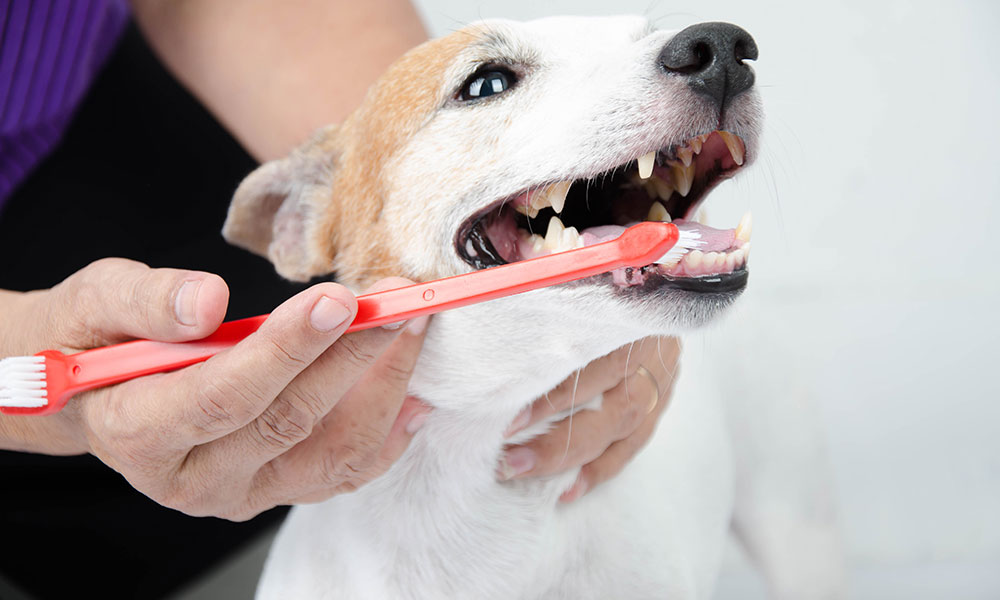
When it comes to tooth fractures in your dog or cat, they normally present themselves in 2 different types. One of the more common, and less serious, fractures to affect your cat or dog are a “non complicated fracture”. This type of fracture is when the tooth chips or breaks near the tip and does not crack or break into the pulp canal. The pulp canal is the area of the tooth where all of the nerve endings are housed and when a break enters that region it can be extremely painful for your pup. A break outside of the pulp canal may still cause some irritation or pain, but will not be as painful as the former.
A “complicated fracture” is the more serious version of the break listed above. That is when the fracture or break in the tooth crosses into the pulp canal, causing a rush of pain whenever a change of temperature or pressure is put on the tooth. This type of fracture will usually result in the tooth becoming inflamed and/or infected and is severely painful for your pet.
Treatment
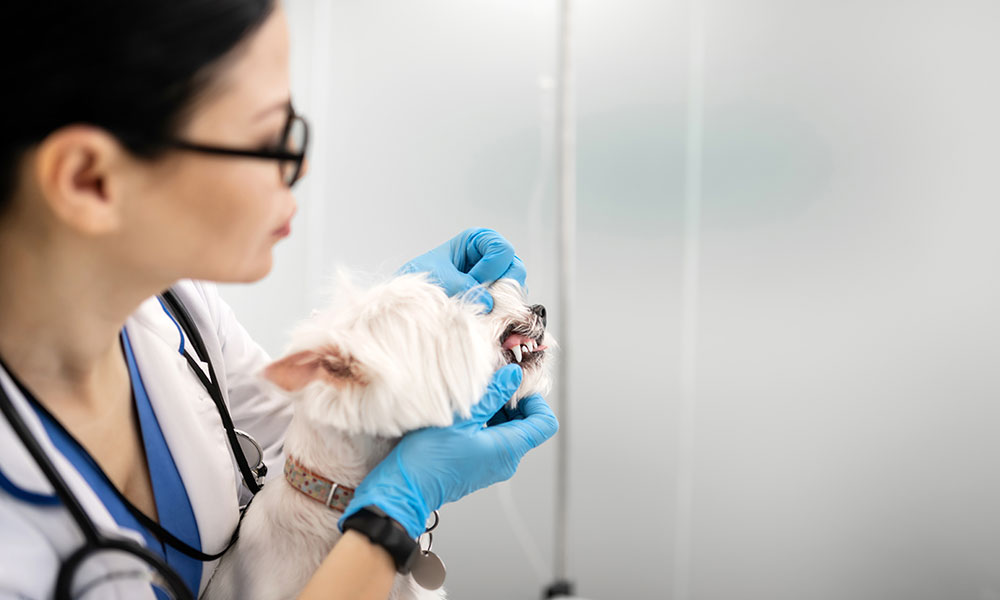
Just like when we break or chip a tooth, treatment for broken teeth in cats and dogs will usually result in a trip to the dentist. Depending on the type of fracture or break, treatment can be as easy as simply sealing the cracked tooth. That is the most common treatment for a non-complicated fracture. That is done by smoothing out the tooth at the area of the break and filling it with a special sealing or bonding agent. Once sealed, it will alleviate any pain the dog or cat may be feeling and ensure that the tooth does not become infected. If the non-complicated fracture has gone too long without being addressed or sealed, and infection has taken, then a more serious procedure may be recommended. In those cases, special surgery or a total root canal may be the only course of action.
For treatment with a complicated fracture of your dog or cat’s tooth, a root canal may be the only solution. If the break is caught soon enough, a sealing procedure may be possible, but that is usually only a viable option if the break is noticed in the first 48-72 hours. If the break has happened to one of your pet’s “non essential” teeth, then simply pulling the tooth could be the only surgery needed. While all teeth are important, a dog or cat can live a comfortable and healthy life without one of the mentioned teeth. For one of their essential teeth, however, like the canines, premolars or lower first molar teeth, a root canal surgery will likely be recommended. That is because those teeth are considered “strategically important” and are the teeth that dogs need for grip objects or tear up their food. A veterinarian dentist will make the final judgment and the procedure is considered relatively simple. A pet owner can decide to pull the tooth if they desire, and it wont have substantial effects on their quality of life, but it is recommended that they do not. Simply put, once that tooth is gone, it is gone forever.
Conclusion

If you have ever or know someone who has ever broken a tooth you know that it is not an ideal situation. The injury is multiple times worse for our pets. They rely on their teeth more as tools than simple chewing mechanisms. Maintaining healthy, strong teeth is one of the more important sides of pet ownership. Ensuring that your dog or cat is eating the right food, having their teeth cleaned regularly and not given toys or bones that could damage their teeth is imperative. It is a risk that pet owners should never leave to chance. Your pet’s veterinarian is the best source for any questions owners may have when it comes to the dental health of their pets. But knowledge can only be administered so far. We must be vigilant in our awareness of how our pets are acting. For the most part, they are rather skilled at not showing signs of pain or discomfort. Identifying the warnings signs and acting once you have is one of, if not the, most important jobs pet owners have. Our pets can’t tell us when something is wrong, but they can show us.
Frequently Asked Questions (FAQ)
Is a broken dog tooth an emergency?
Yes. A broken tooth is one of the most pressing injuries pet owners should act on with their pets. Dogs use their mouths to eat and as tools and if that tool is broken, it must be fixed as quickly as possible.
What happens if a dog’s tooth breaks?
If a dog’s tooth breaks, owners should schedule a vet visit immediately. Sometimes the break may not be severe enough to require surgery, but a vet will quickly seal any minor breaks or cracks to avoid an infection.
How much does it cost to fix a broken dog tooth?
Cost of repair depends on the damage. In most cases the cost to fix a broken dog tooth can range from $500-$1000.
What should I do if my cat breaks a tooth?
Contact your veterinarian immediately. Even the smallest break or crack in your cat’s tooth can become infected and lead to worsening issues the longer it goes left untreated.
Want to Learn More?
Download our AILMENT GUIDE NOW.
PLUS! all FIRST TIME buyers get 50% off their additional order. Visit verlota.com to get your discount code.





